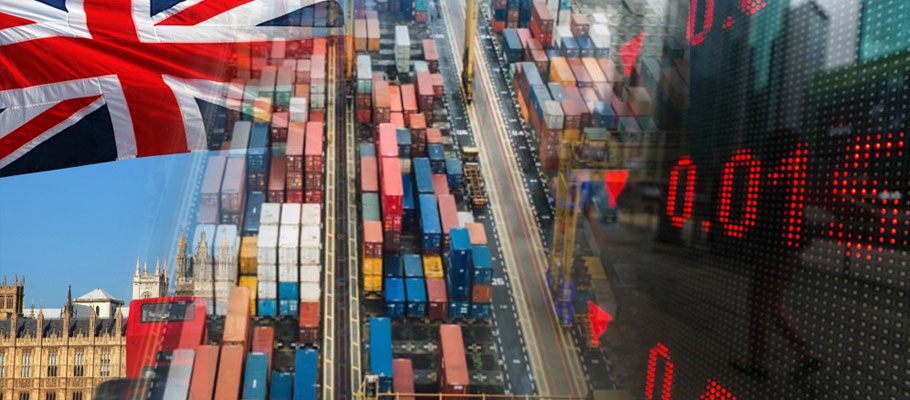
Published: August 6th, 2025
Britain's Economic Confidence Index has sunk to its lowest point since the first figures were published in 2016, down to -71 from -52 recorded in June 2025.
The index, a survey of business leaders published quarterly by the UK Institute of Directors, suggests investment decisions are being delayed, while headcount and revenues are all expected to fall in the coming months.
‘UK senior executives started the summer months with low expectations for growth, the lowest we've seen since our survey began in 2016,’ said a statement accompanying the results. ‘Firms continue to wrestle with cost increases imposed by Westminster, notably rises to the national minimum wage and changes to corporate National Insurance contributions.’
Many business leaders are frustrated, the survey notes, that the current Labour government has rapidly raised the cost of doing business without taking action to improve the country's broader business environment.
In a note to investors following release of the figures, Société Générale's FX Strategy Unit said the survey ‘shines a light on Britain's deteriorating economic environment’ and all but ensures that Sterling will stay on the back foot against the Euro and Dollar.
Sentiment surrounding GBP has headed south in recent weeks following dovish comments out of the Bank of England regarding the labour market and interest rates. The bank's analysts say traders are now looking for further losses ahead.
Société Générale notes that the Pound had bounced back against the Euro at the end of last week, and low-volatility typical of the summer trading period could give Sterling near-term support.
That said, headwinds ‘could begin blowing again in October when the government unveils its next budget. The Chancellor is expected to pile on new tax rises in an effort to address Westminster's gaping budget ‘black hole’.
The Pound regained previous losses against the Greenback and Euro in mid-April 2025 following the most recent update to the Trump administration's tariff policy. Implementation had been pushed back by 90 days to give countries time to negotiate.
GBP/USD saw a lift of nearly 100 points to 1.2849 and above, while GBP/EUR pushed up nearly 150 points to regain the 1.16 handle, spurred by a social media post by President Donald Trump saying his global tariff regime would be lowered to 10 per cent for most countries and that implementation would be pushed back by 90 days.
Analysts said the ‘relief rally’ triggered in global equity markets, plus the possibility of stabilization in the Sterling bond market, could fuel a GBP recovery this week. The Pound may also get support from the downward bias of the trade-weighted Renminbi, a persistent headwind for USD.
‘China has gone into full fight mode,’ said a market analysis by Commonwealth Bank of Australia's forex strategy unit. ‘Beijing's aggressive posture points to one-for-one retaliation with the US, a situation that will probably persist over the near term. That poses added downside risks to Chinese economic growth and could also raise inflation.’
Trump raised the tariff on Chinese imports to a punitive 125 per cent after the country's Commerce Ministry raised its retaliatory levy to 118 per cent, creating a new headwind for the world's second largest economy. The move will also pressurize China's currency, which has seen a slow but steady depreciation since the latest US-China trade conflict began.
The tariff battle is also a headwind for the Greenback since the maths behind Beijing's managed-floating exchange rate creates a positive correlation with, and arguably a peg to, USD. Controlled parity fixings and trading limits also allow China's central bank policymakers to manage the pace of depreciation.
The Euro slipped against the Dollar in the same period as forex traders responded to an announcement that the latest round of tariffs imports would impact the bloc's exports.
The White House said a 25 per cent import duty was being levied against all steel and aluminium imports to the US, and that other tariffs would be announced in the coming days.
A note to investors from Bank of America (BoA) noted that ‘USD had gained across the board’ in the immediate aftermath of the announcement, while treasury yields rose on inflation worries and investors priced-in lowering odds for a second Fed rate cut in 2025.
Trump told reporters that new tariffs would be announced that equal those already levied by other countries against American goods, suggesting tariffs on EU products are now in the offing.
France's French foreign minister, Jean-Noel Barrot, told Reuters that the EU ‘must act to defend its interests,’ saying that the bloc will need to impose retaliatory measures if Trump makes good on his threat.
‘Trump tried this in 2018 and we responded in kind. We will do so again,’ he said. ‘The Commission is prepared to pull the trigger in response to any trade provocation.’
The potential for tit-for-tat tariffs suggests that Euro-Dollar weakness could be on the table in the short term.
Against that backdrop, US inflation readings could be definitive. Notable rises could be supportive for Greenback, BoA wrote, and push EUR/USD below 1.03. Alternatively, indications that inflation is subsiding could weigh on the Dollar as it would give hope for more than one Fed cut this year.
In October 2024, an analyst note from investment bank Jefferies suggested a dip in the Euro to Dollar rate's 200-day moving average marked a significant deterioration in the pair's technical outlook.
The firm's forecast model relies on the 200-day displaced moving average (DMA), placing the pair in a multi-week downtrend when below, and an uptrend when above.
‘The 200 day moving averages can be key long-term milestones where fiat currencies sometimes get caught and stay above or below their moving averages for extended periods.’
At that point the 200 DMA was located at 1.0872, with signals suggesting the technical level was acting as a ceiling, even as rebounds seen the previous week attempted to rise above it.